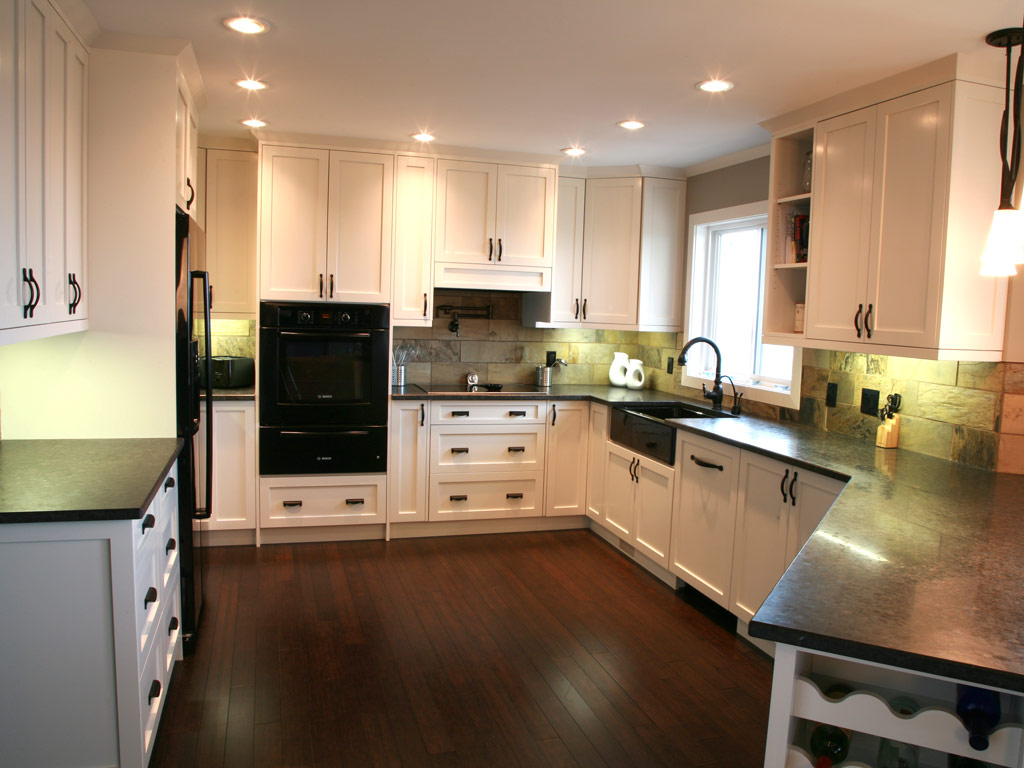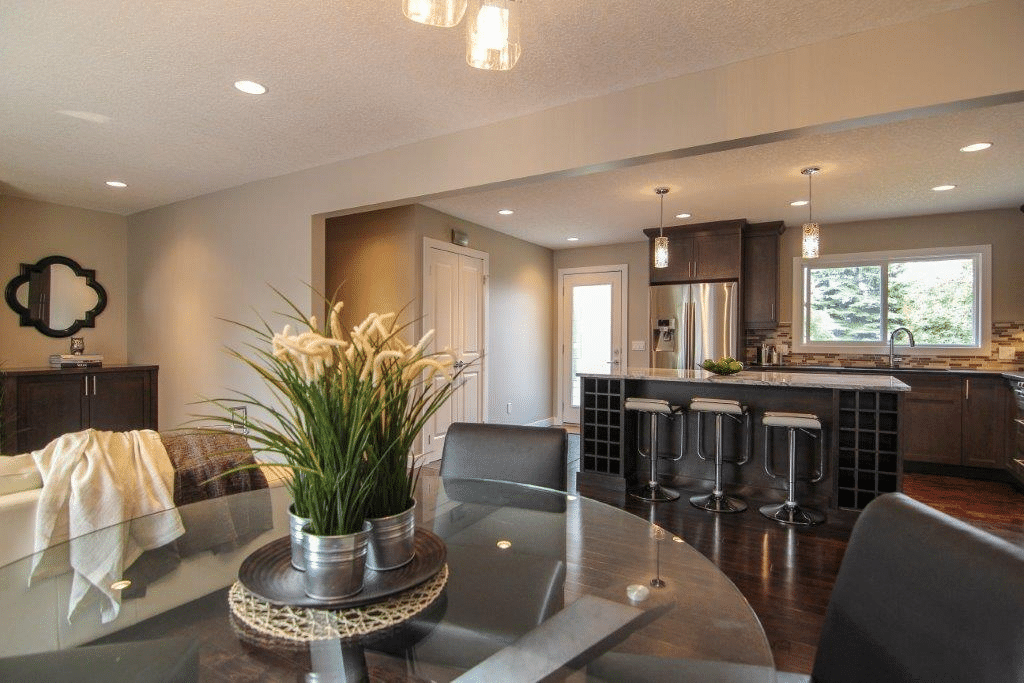How to Choose a Kitchen Sink: A Comprehenisive Guide

Choosing the right kitchen sink is a critical decision in any kitchen renovation. The sink is a focal point of kitchen activity, from meal prep to cleanup, and selecting the perfect one can enhance both functionality and aesthetics. This guide will walk you through the essential factors to consider when choosing a kitchen sink, including the number of basins, shapes, and materials, along with the pros and cons of each option.
Types of Kitchen Sinks by Number of Basins
Single Basin Sinks A single basin sink features one large, uninterrupted bowl, making it ideal for handling oversized pots, pans, and baking sheets. This design is particularly beneficial in smaller kitchens where counter space is at a premium, as it maximizes the usable area within the sink itself. Homeowners who frequently cook large meals or entertain guests will appreciate the spaciousness of a single basin sink, which simplifies the process of washing large items that might not fit in a divided kitchen sink.
Despite its many advantages, a single basin sink has some limitations. One of the primary drawbacks is the lack of multitasking capability. For instance, if you need to soak a dirty pot while simultaneously rinsing vegetables, you might find a single basin sink less convenient than a double basin model. Additionally, when the sink is filled with dirty dishes, it can be challenging to use the sink for other tasks, such as washing hands or filling a pot with water.
Double Basin Sinks Double basin sinks, featuring two separate bowls, offer greater flexibility and convenience for various kitchen tasks. This type of sink allows you to multitask more efficiently, such as washing dishes in one basin while rinsing vegetables in the other. The divided design can also help in separating clean and dirty dishes, making it easier to manage kitchen hygiene.
However, double basin sinks are not without their drawbacks. The divider between the two basins can make it more challenging to wash larger items, which might not fit comfortably in either basin. Cleaning around the divider can also be more cumbersome, as it creates additional crevices where food particles and debris can accumulate. Additionally, double basin sinks typically require more counter space, which might not be ideal for smaller kitchens.
Triple Basin Sinks Triple basin kitchen sinks, with their three distinct compartments, offer unparalleled versatility in the kitchen. These sinks typically feature two larger basins and a smaller middle basin, often equipped with a garbage disposal. This configuration allows for an extraordinary level of multitasking, making it possible to perform several kitchen tasks simultaneously without cross-contamination or clutter.
The main advantage of a triple basin sink is its ability to separate different kitchen activities efficiently. You can use one basin for washing dishes, another for rinsing vegetables, and the smaller central basin for disposing of food waste. This setup helps maintain a clean and organized workspace, which can be particularly beneficial in busy kitchens where multiple tasks are often underway. However, the complexity and size of triple basin sinks require more counter space and maintenance.
Shapes of Kitchen Sinks
Rectangular Sinks Rectangular sinks are a classic choice for many kitchens due to their practical and versatile design. They maximize the use of space within the sink, making them ideal for a variety of kitchen tasks. The straight lines and ample surface area of rectangular sinks accommodate large pots, pans, and baking sheets, making them a favorite among home cooks and professional chefs alike.
One of the significant advantages of rectangular sinks is their compatibility with various kitchen styles, from traditional to modern. Their clean, straightforward lines blend seamlessly with different countertop materials and cabinetry designs. However, the corners of rectangular sinks can present some cleaning challenges. Food particles and debris can accumulate in the corners, requiring extra attention during cleaning.
Square Sinks Square kitchen sinks bring a modern and sleek look to any kitchen, making them a popular choice for contemporary designs. Their symmetrical shape provides a clean, minimalist aesthetic that can be a striking focal point in the kitchen. Square sinks are particularly well-suited for smaller kitchens, where their compact design can make efficient use of limited counter space.
However, the compact size of square sinks can be a limitation when it comes to washing larger items. While they are excellent for everyday tasks, they might not be as convenient for cleaning large pots and pans or handling bulkier kitchenware. Additionally, like rectangular sinks, the corners can be a bit more challenging to clean, although some models feature slightly rounded edges to help mitigate this issue.
Round Sinks Round sinks stand out for their unique and stylish appearance, adding a touch of elegance to any kitchen. Their smooth, curved design can be a visual focal point, especially in kitchens with a modern or eclectic design aesthetic. Round kitchen sinks are particularly popular for use in smaller spaces, such as bar areas or prep stations, where their compact size and shape can be a practical advantage.
One of the main advantages of round sinks is their ease of cleaning. With no corners or edges, it’s simple to wipe down the entire surface, reducing the likelihood of food particles and grime building up. This makes round sinks an excellent choice for those who prioritize hygiene and low-maintenance kitchen features. However, the unique shape of round sinks also comes with some limitations, such as less usable space compared to rectangular or square sinks.
Specialty Shapes (e.g., Farmhouse, Corner Sinks) Specialty-shaped sinks, such as farmhouse and corner sinks, offer unique design elements that can make a significant impact in a kitchen. Farmhouse sinks, with their deep basins and exposed fronts, bring a rustic charm and practicality to the kitchen. These sinks are ideal for large families or avid cooks, as they provide ample space for washing large pots and pans.
While specialty-shaped sinks offer unique advantages, they also come with specific challenges. Farmhouse kitchen sinks, for instance, can be heavier and require more robust support structures. They can also be more prone to chipping and scratching due to their front-facing design. Corner sinks, while great for space-saving, might have limited basin sizes and can be harder to access, especially when reaching into the back corners.
Materials for Kitchen Sinks
Stainless Steel Stainless steel sinks are a popular choice for many homeowners due to their durability and versatility. They are resistant to heat and stains, making them ideal for a variety of kitchen tasks. Stainless steel sinks come in various gauges, with lower gauge numbers indicating thicker and more durable material. This durability makes them a long-lasting choice for any kitchen.
However, stainless steel sinks do have some drawbacks. They can be prone to scratching and denting, especially if made from thinner gauge steel. Water spots and fingerprints are also more visible on stainless steel, requiring regular cleaning to maintain their appearance. Despite these minor inconveniences, the overall durability and ease of maintenance make stainless steel kitchen sinks a preferred choice for many kitchens.
Porcelain Porcelain sinks bring a classic and elegant look to any kitchen. They are known for their smooth, glossy finish and are available in a variety of colors to match different kitchen styles. Porcelain sinks are made by coating cast iron or steel with a layer of porcelain enamel, which makes them resistant to stains and relatively easy to clean.
However, porcelain sinks can be susceptible to chipping and cracking if heavy objects are dropped on them. They also require regular maintenance to keep their glossy finish looking its best. Despite these considerations, many homeowners appreciate the timeless beauty and functionality that porcelain sinks offer. When choosing a porcelain sink, consider the overall design and usage patterns in your kitchen to ensure it meets your needs.
Granite Composite Granite composite sinks are a blend of granite stone dust and acrylic resins, creating a highly durable and attractive material. These sinks are resistant to scratches, stains, and heat, making them an excellent choice for busy kitchens. They also come in various colors and finishes, allowing for a seamless integration with different countertop materials and kitchen styles.
While granite composite kitchen sinks are incredibly durable, they are also heavier than other sink materials, which may require reinforced cabinetry for support. Additionally, they can be more expensive than other options, but their longevity and aesthetic appeal often justify the investment. When choosing a granite composite sink, ensure it matches your kitchen’s design and that your cabinetry can support its weight.
Cast Iron Cast iron sinks, coated with a layer of porcelain enamel, offer a blend of durability and classic charm. These sinks are known for their sturdy construction and long-lasting performance. They are resistant to heat and can retain heat well, making them ideal for soaking dishes. Cast iron sinks are available in various colors and styles, allowing them to complement a range of kitchen designs.
However, cast iron sinks are extremely heavy and require robust support structures during installation. They can also be prone to chipping and scratching over time, especially if heavy or sharp objects are dropped on them. Despite these challenges, cast iron sinks remain a popular choice for those seeking a timeless, durable, and aesthetically pleasing option for their kitchen.
Copper Copper sinks are known for their unique and attractive patina that develops over time, giving each kitchen sink a distinctive look. They are naturally antimicrobial, which can help reduce the presence of bacteria in the kitchen. Copper sinks are available in various styles and finishes, making them a versatile choice for different kitchen designs.
However, copper sinks require regular maintenance to prevent tarnish and maintain their appearance. They can also be expensive, but their unique look and antimicrobial properties often make them a worthwhile investment. When choosing a copper sink, consider the level of maintenance you are willing to commit to and whether the distinctive aesthetic fits your kitchen’s design.
Additional Considerations
Installation Types The type of installation can significantly affect the functionality and appearance of your kitchen sink. Undermount sinks are installed below the countertop, providing a seamless look and making it easier to clean the counter. Drop-in sinks, on the other hand, are installed above the countertop and are generally easier to install and replace. Farmhouse sinks, known for their exposed fronts, add a distinctive look but may require custom cabinetry and more robust support.
Sink Accessories To enhance the functionality of your sink, consider adding accessories like built-in drainboards, cutting boards, and drying racks. These accessories can help streamline kitchen tasks and keep your countertop organized. When selecting a sink, check if it comes with or is compatible with such accessories to maximize its utility.
Budget and Longevity When choosing a kitchen sink, it’s essential to balance cost with quality and durability. Investing in a higher-quality kitchen sink can provide long-term benefits, reducing the need for frequent replacements or repairs. Consider the materials and features that will best suit your needs and budget, ensuring you get the most value from your investment.
Conclusion
Choosing the right kitchen sink involves considering various factors, including the number of basins, shape, and material. Assess your personal needs and kitchen design to make the best choice for long-term satisfaction. By understanding the pros and cons of each option, you can make an informed decision that enhances both the functionality and aesthetics of your kitchen.
Call to Action
For personalized advice and to explore a wide range of kitchen sink options, consult with our home renovation experts. Contact us today to schedule a consultation and transform your kitchen into the heart of your home. The designer and contractors at Lifestyle Renovations will assist you in deciding on the best options for your kitchen sink during your kitchen renovation.





